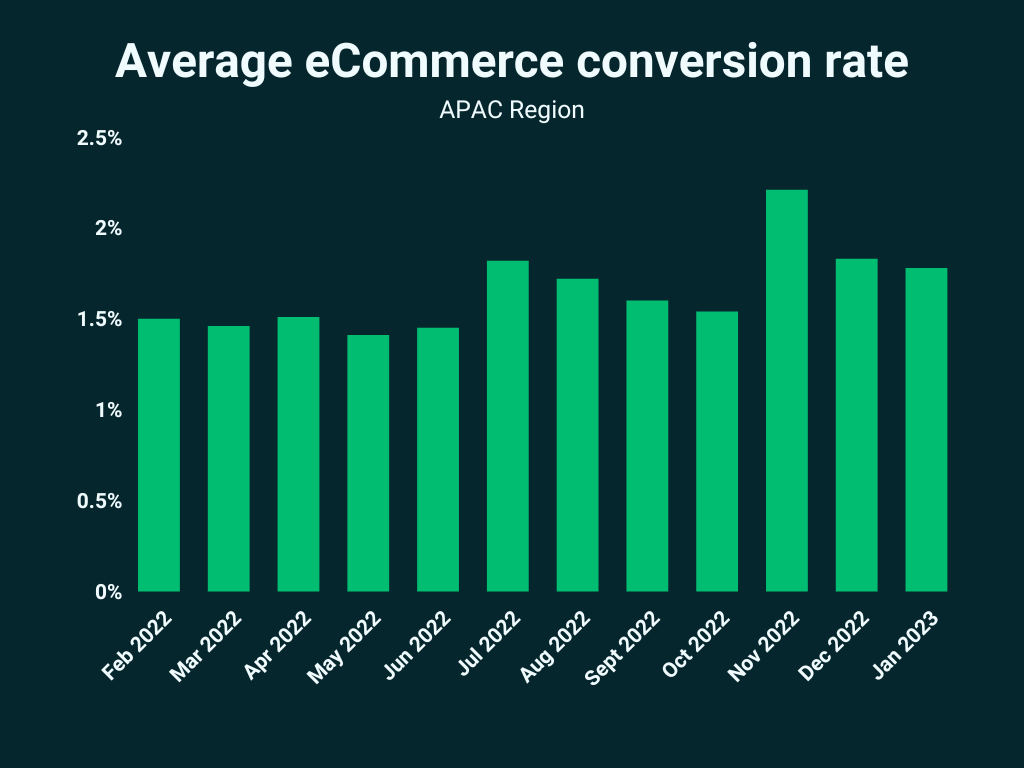E-commerce has become a cornerstone of the global economy, empowering businesses of all sizes to reach customers around the world. However, with this vast opportunity comes intense competition. To stay ahead, it’s crucial to develop dynamic e-commerce marketing strategies that defy conventional wisdom, diversify your approach, and even leverage passive income streams to ensure long-term sustainability.
In this comprehensive guide, we’ll cover proven marketing strategies, innovative approaches, and the potential for passive income in the e-commerce space. By the end, you’ll have a roadmap to enhance your marketing efforts, diversify your revenue channels, and achieve consistent business growth.
Table of Contents:
- What is E-Commerce Marketing?
- Traditional E-Commerce Marketing Strategies
- SEO (Search Engine Optimization)
- Email Marketing
- Paid Advertising
- Social Media Marketing
- Innovative E-Commerce Marketing Strategies: Defy the Norms
- Influencer Marketing
- Content Marketing and SEO
- Affiliate Marketing
- User-Generated Content (UGC)
- Podcast Marketing
- Interactive Content
- Why Diversification in E-Commerce Marketing is Key
- The Risks of Relying on One Marketing Channel
- Multi-Channel Marketing
- Diversification Tips
- The Concept of Passive Income in E-Commerce
- What is Passive Income?
- How Does Passive Income Relate to E-Commerce?
- Strategies to Build Passive Income in E-Commerce
- Scaling Passive Income for Long-Term Sustainability
- Real-Life Examples of E-Commerce Marketing Success
- Tips for Success in E-Commerce Marketing
- Conclusion: E-Commerce Marketing Strategies for Sustainable Growth
1. What is E-Commerce Marketing?
At its core, e-commerce marketing is the set of strategies and tactics businesses use to promote and sell their products or services online. Whether you run a small niche store or a global marketplace, the goal of e-commerce marketing is the same: to attract visitors, convert them into customers, and foster long-term brand loyalty.
E-commerce marketing is multifaceted, involving a combination of digital advertising, SEO, social media engagement, email campaigns, and more. However, to succeed in today’s crowded online marketplace, e-commerce marketing requires creativity, adaptability, and a focus on delivering an exceptional customer experience.
2. Traditional E-Commerce Marketing Strategies
Before diving into innovative and cutting-edge strategies, it’s important to understand the foundational marketing strategies that have stood the test of time. These traditional tactics remain crucial to any e-commerce business’s success and should not be overlooked.
SEO (Search Engine Optimization)
SEO is one of the most important marketing tools for any online business. It ensures that your products and services are visible when potential customers search for relevant keywords. Effective SEO practices can dramatically increase organic traffic to your website, reducing the need for paid advertising and helping you establish long-term visibility.
Here are the essential components of a strong SEO strategy:
- Keyword Research: Use tools like Google Keyword Planner, Ahrefs, or SEMrush to identify the most relevant and high-volume keywords for your products or services.
- On-Page Optimization: Optimize your title tags, meta descriptions, image alt texts, and header tags to improve visibility on search engines.
- Technical SEO: Ensure that your site is fast, mobile-friendly, and has a clean URL structure. Sites that perform well in terms of technical SEO tend to rank higher.
- Link Building: Earn backlinks from authoritative websites to improve your domain authority and search rankings.
Email Marketing
Email marketing remains one of the highest ROI-generating strategies in e-commerce marketing. It allows you to maintain direct communication with your audience, promote new products, and encourage repeat business.
Key elements of successful email marketing include:
- Segmentation: Divide your email list into segments based on demographics, past purchases, and engagement levels. This ensures that each customer receives personalized and relevant messages.
- Automation: Set up automated workflows, such as welcome series, cart abandonment reminders, or post-purchase follow-ups.
- A/B Testing: Regularly test subject lines, email copy, and call-to-action buttons to improve open rates and conversions.
Paid Advertising
Paid advertising is essential for driving immediate traffic to your e-commerce store. Platforms like Google Ads, Facebook Ads, and Instagram Ads allow you to target specific demographics, interests, and behaviors. However, it’s important to strategically invest in paid ads to avoid overspending.
- Google Search Ads: Reach users who are actively searching for products or services similar to yours. This is highly effective for intent-driven traffic.
- Facebook and Instagram Ads: These platforms allow highly targeted advertising, ensuring that your message is seen by the right people.
- Retargeting Ads: Retarget users who have visited your site but didn’t complete a purchase, bringing them back for another chance to convert.
Social Media Marketing
Social media platforms like Instagram, Facebook, and TikTok are essential for building brand awareness, driving traffic, and engaging with your audience. Creating a content strategy that aligns with your brand’s goals can help you establish a community of loyal followers.
- Content Creation: Post a mix of product photos, lifestyle content, and user-generated content (UGC) to keep your audience engaged and inspire trust.
- Paid Social Ads: Boost your organic reach through paid social ads, which are especially effective for showcasing products and promotions.
- Engagement: Actively engage with your followers by responding to comments, messages, and sharing user-generated content to foster brand loyalty.
3. Innovative E-Commerce Marketing Strategies: Defy the Norms
In an ever-changing digital landscape, businesses must be innovative to stand out. These innovative strategies can help you break through the noise and capture your audience’s attention.
Influencer Marketing
Influencer marketing has become a powerful strategy, especially for brands targeting younger demographics. By collaborating with influencers who resonate with your target audience, you can increase brand awareness and drive sales.
- Micro-Influencers: Instead of working with big celebrities, many brands are opting for micro-influencers who have smaller but highly engaged audiences.
- Content Collaboration: Work with influencers to create authentic, native content that feels less like advertising and more like a personal recommendation.
- Trackable Affiliate Links: Use affiliate marketing to track influencer performance, paying them a commission based on sales generated through their unique links.
Content Marketing and SEO
While SEO is often considered a technical process, combining it with content marketing can boost its effectiveness. When your content is informative, valuable, and optimized for search, it can increase both organic traffic and user engagement.
- Blog Posts: Write blog articles that answer customer questions, offer product advice, or share industry insights. These can improve your site’s SEO and establish you as a thought leader in your niche.
- Video Content: Invest in video content for platforms like YouTube and Instagram. Product demonstrations, how-to videos, and customer testimonials help humanize your brand.
- Long-Form Guides and Resources: Create in-depth guides and resources that provide real value to your audience while targeting long-tail keywords.
Affiliate Marketing
Affiliate marketing allows you to leverage the power of third parties to market your products. By offering affiliates a commission for driving sales, you can expand your reach and acquire new customers at a lower cost.
- Affiliate Networks: Join established affiliate networks like ShareASale, Rakuten, or Amazon Associates to connect with potential partners.
- Create Clear Terms: Set clear commission structures and provide affiliates with high-quality marketing materials to ensure success.
User-Generated Content (UGC)
UGC is one of the most powerful forms of social proof. When your customers create and share content featuring your products, it builds trust and authenticity. You can encourage UGC by running contests, creating branded hashtags, or offering incentives.
- UGC Campaigns: Create campaigns where customers share photos or videos using your products, showcasing their creativity.
- Feature UGC on Social Media: Share UGC on your Instagram, Facebook, or website to show real-life examples of your products in action.
Podcast Marketing
Podcasts have exploded in popularity in recent years, and they’re becoming an excellent tool for e-commerce brands to reach niche audiences. Whether it’s through creating your own podcast or collaborating with existing podcasters, podcasts provide a way to connect with consumers on a personal level.
- Create a Branded Podcast: Share industry insights, product stories, or customer testimonials through a regular podcast.
- Guest Appearances: Appear as a guest on popular podcasts within your niche to expand your reach and promote your products.
Interactive Content
Interactive content like quizzes, polls, and surveys not only engages your audience but also provides valuable data that can be used to personalize future marketing efforts.
- Product Quizzes: Help customers choose the right products based on their preferences, enhancing the user experience.
- Surveys and Polls: Use surveys to gather feedback from your audience, improving product offerings and marketing strategies.
4. Why Diversification in E-Commerce Marketing is Key
When it comes to marketing, diversification means expanding your efforts across different channels and strategies to mitigate risk and maximize growth opportunities.
The Risks of Relying on One Marketing Channel
Relying solely on one channel can leave you vulnerable to changes in algorithms, market trends, or platform policies. For instance, Facebook’s algorithm changes could significantly reduce the reach of your organic posts, or Google’s updates could affect your search ranking.
Multi-Channel Marketing
By adopting a multi-channel marketing approach, you can spread your risk across multiple platforms, ensuring that your business doesn’t rely too heavily on one channel. Consider using a mix of:
- Organic and Paid Search
- Social Media
- Email Marketing
- Influencer and Affiliate Marketing
Diversification Tips
- Track Performance: Use analytics tools to track the performance of each marketing channel and adjust strategies accordingly.
- Leverage Different Formats: Create a variety of content types, including videos, blogs, social posts, and podcasts, to appeal to different segments of your audience.
- Test New Platforms: Don’t be afraid to explore emerging platforms like TikTok or new advertising tools to expand your reach.
5. The Concept of Passive Income in E-Commerce
What is Passive Income?
Passive income refers to earnings that require little ongoing effort after the initial work has been done. In the context of e-commerce, passive income allows you to earn money consistently without constant active involvement in day-to-day operations.
How Does Passive Income Relate to E-Commerce?
Building passive income in e-commerce means creating revenue streams that generate income with minimal effort. Common passive income models in e-commerce include:
- Dropshipping: You sell products without holding inventory. When a customer orders, the supplier fulfills the order directly.
- Affiliate Marketing: Earning commissions from other companies for promoting their products through affiliate links.
- Digital Products: Selling digital products, such as e-books, courses, or design templates, that can be sold repeatedly.
Strategies to Build Passive Income in E-Commerce
- Create Digital Products: Write eBooks, create online courses, or develop printables that can be sold indefinitely.
- Automate Sales: Use e-commerce platforms like Shopify to set up automated sales funnels, where customers can buy digital products or subscription services with minimal effort from you.
- Affiliate Programs: Build partnerships with companies that align with your brand and earn commissions by promoting their products to your audience.
Scaling Passive Income for Long-Term Sustainability
- Outsource Operations: To scale, consider outsourcing customer service, product sourcing, and content creation to keep your passive income growing without additional work.
- Diversify Passive Income Streams: Combine multiple passive income models, like affiliate marketing and digital product sales, to create a more stable income.
6. Real-Life Examples of E-Commerce Marketing Success
Exploring real-life case studies can inspire new ideas and strategies for your e-commerce business.
- Glossier: This beauty brand has mastered influencer marketing, building a community around its products. It has leveraged micro-influencers to create authentic, grassroots marketing campaigns that have helped it grow into a multi-million-dollar business.
- Amazon: Amazon’s affiliate marketing program is one of the most successful in history, allowing affiliates to earn commissions by driving traffic and sales. This program has enabled Amazon to tap into a global network of marketers.
- Warby Parker: Warby Parker revolutionized the eyewear industry with its direct-to-consumer model, cutting out middlemen and offering stylish glasses at affordable prices. Their online marketing efforts, including strong SEO and content strategies, have driven huge success.
7. Tips for Success in E-Commerce Marketing
- Focus on Customer Experience: A seamless website, excellent customer service, and fast shipping can make a huge difference in conversions and repeat customers.
- Leverage Data: Continuously analyze your marketing efforts using tools like Google Analytics and Facebook Insights to identify what’s working and where adjustments are needed.
- Consistency is Key: Whether you’re posting on social media or sending out emails, maintaining consistency builds trust and keeps your brand top-of-mind.
8. Conclusion: E-Commerce Marketing Strategies for Sustainable Growth
In today’s competitive e-commerce world, success requires more than just traditional marketing. You must innovate, diversify your strategies, and explore opportunities for passive income. By blending classic tactics like SEO and email marketing with modern approaches like influencer marketing and interactive content, you can create a marketing ecosystem that drives long-term growth.
Diversification, smart use of passive income strategies, and a relentless focus on delivering exceptional customer experiences will ensure that your e-commerce business remains competitive and sustainable for years to come.for more information please visit this website














Leave a Reply